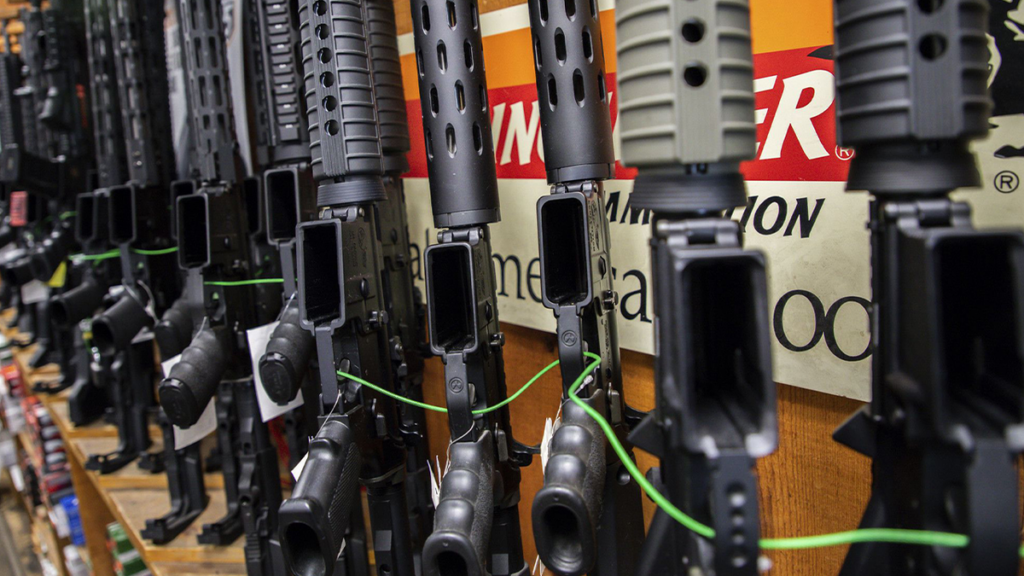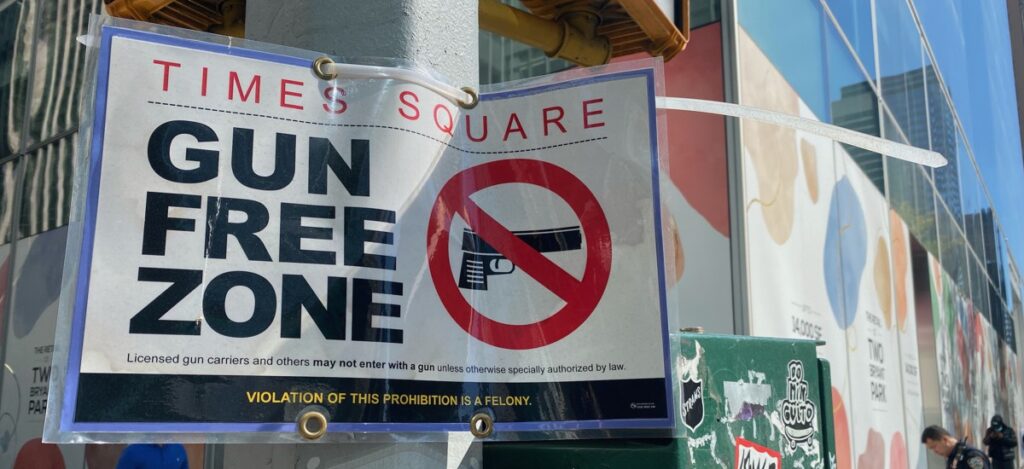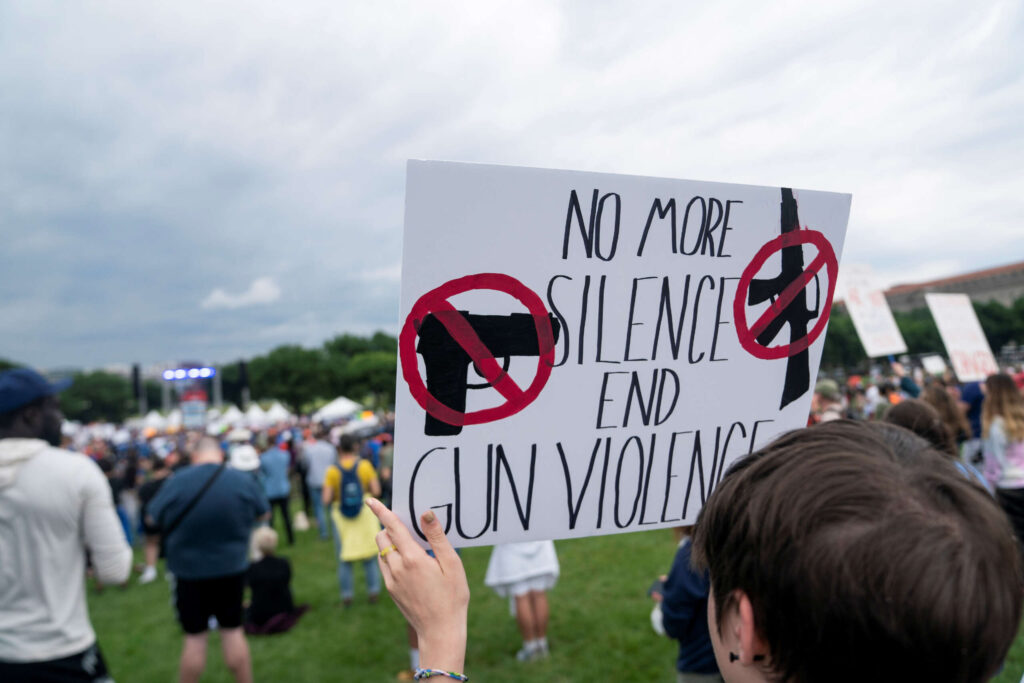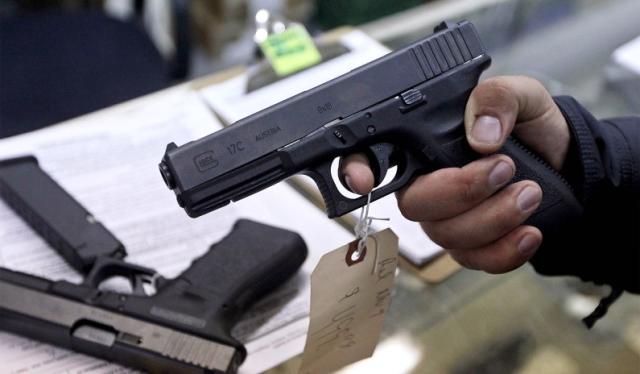A brief talk on Gun violence in the USA
Gun violence in the USA is a very big issue, but in the last few years, the problem has gotten bigger. According to the Gun Control Act, it is illegal for a person to buy or sell guns if they are under a certain age, but gun sales by dealers make it easy for people to buy guns. According to the most current statistics given by the Centers for Disease Control and Prevention, more Americans died in 2021 as a result of gun-related injuries than in any other year. Among them were record numbers of gun-related suicides and murders. Despite the growth in these kinds of fatalities, the rate of gun deaths, which accounts for the nation’s growing population, remained lower than it was in prior decades. To prevent crime, safeguard those who are vulnerable, and advance general community safety, it is essential to address firearms violations. Communities should fight to make their surroundings more secure, safe, and supportive of the welfare of their citizens by addressing the problem of firearms crimes. I will try to show in this paper different kinds of research sources that show the importance of this problem and how we can help the communities fight against it in various ways.

In my paper, I will use multiple research sources to show how the problem of gun violence has become an increasing problem in the United States over the past couple of years and how it has affected many communities and individuals. First, I will use the research of the National Center for Injury Prevention and Control to show how gun violence has become a growing problem in the United States. And explain the reason behind this gun violation and the impacts of this problem on our communities.
According to John Gramlich, “In 2021, the most recent year for which complete data is available, 48,830 people died from gun-related injuries in the U.S., according to the CDC” (1). The illustration above shows how urgent it is to solve the various issues related to gun violence, such as unlawful ownership, insufficient regulation, and the harm it does to the general public’s health. To promote informed discussions about public safety, laws, and community well-being, these statistics must be analyzed and discussed openly. It shows how crucial it is to put in place practical steps to lower the number of gun-related injuries and fatalities, making the community a safer and more secure place for everyone to live. “In 2021, 54% of all gun-related deaths in the U.S. were suicides (26,328), while 43% were murders (20,958), according to the CDC” (John 1). It underscores the critical connection between gun safety and mental health and underscores the need for holistic approaches to treating mental illness and ending suicide. In addition, the data shows that 20,958 people, or 43% of firearm-related deaths, were the result of homicides. It shows how complex the problem of violence is and how it affects communities. To address this aspect, variables such as crime prevention, community involvement, and programs aimed at reducing violence in various settings must be considered. To create targeted interventions and policies, policymakers, public health experts, and communities need to understand the breakdown of firearm-related deaths into suicide and homicide categories. It emphasizes the importance of a combined approach to gun violence prevention that considers the safety and mental health implications of gun ownership. “In particular, gun suicides have climbed sharply during the pandemic, increasing 45% between 2019 and 2021, while the number of gun suicides rose 10% during that span” (John 1). As noted earlier, the significant increase in gun-related deaths, both homicides and suicides, in 2019 and 2021 underscores the alarming impact of the epidemic. A complex combination of factors, including possible socioeconomic pressures, disruptions in social structures, and other consequences related to the pandemic, may have led to an increase in violent incidents, showing a 45 percent increase in homicides during this period. At the same time, a 10 percent increase in gun-related suicides underscores the mental health problems increased by the epidemic. The increase was likely due to factors related to the public health crisis, such as isolation, economic instability, and general stress. Determining the frequency of mass shootings in the United States over time is difficult because of the same problem that makes it difficult to determine the number of deaths caused by mass shootings. This incident also complicates the matter: “Chance variability in the annual number of mass shooting incidents makes it challenging to discern a clear trend, and trend estimates will be sensitive to outliers and to the time frame chosen for analysis.” (Rosanna 1) To explain the quote, when we look at the number of mass shootings that occur each year, there is a lot of randomness or chance involved. Sometimes the number may increase a bit and sometimes it may decrease. This natural variability can make it difficult to identify a particular pattern or trend over time. Also, having an unusually high or low number of incidents in a year (an outlier) can significantly affect our understanding of whether mass shootings are increasing or decreasing. So if we draw our conclusions based on just one or two years with extreme numbers, it may not give us an accurate picture of the overall situation. The time frames we choose for analysis are also important. Choosing a short and long period can lead to different interpretations of whether mass shootings are more or less frequent. Understanding these variations and how to analyze the data helps us get a more accurate picture of what mass shootings happen over time. We understand that the statistic of mass shootings in the US is not accurate due to constant changes in the incidents.

My second claim is the surprising geography of gun violations around the USA. Each region has a unique gun violation behavior. The reason for this is because the gun laws are different in each state. “If you grew up in the coal mining region of eastern Pennsylvania, your chance of dying of a gunshot is about half that if you grew up in the coalfields of West Virginia, three hundred miles to the southwest. Someone living in the most rural counties of South Carolina is more than three times as likely to be killed by gunshots.”. The risk of dying from gun violence depends on where you live. Different regions and communities have different levels of risk, and these differences can be quite significant. These examples highlight how geography and local conditions can affect the likelihood of gun deaths in different places. Divergence in gun violence in different regions of the United States runs deep in history and extends beyond recent policy changes. These differences stem from events that occurred long before the creation of the American party system, the introduction of different types of firearms, and even the formation of the United States as a republic. “The geography of gun violence is shaped by a complex interplay of regional, cultural, and historical factors” (Colin 1). To understand these roots, one must examine how the land was originally settled and who settled it. Insight into the problem emerges when we look at historical patterns of colonization as they have influenced both public and elite views of how gun violence should be addressed. Fundamentally, differences in gun violence are deeply tied to the unique regional, cultural, and historical contexts that have shaped different parts of the country over time.
In my third claim, I will discuss the gun law history in the US and also the Second Amendment, which gives the idea of owning a gun and the right to bear arms. I will also discuss the history of gun violations in general, which is the story of how gun laws have evolved. This includes understanding how people have used and misused guns and how societies have tried to balance individual rights and public safety. Throughout history, different cultures and nations have struggled with the challenge of regulating the use of firearms to prevent crime while respecting the right of citizens to own firearms. But in the end, it all messes up as the gun eventually goes to the wrong hand. “A well-regulated militia, being necessary to the security of a free state, is the right of the people to keep and bear arms.” The Second Amendment’s exact meaning and intent have been strongly debated in the early twenty-first century. When it was passed, every state kept a militia made up of regular people who worked as part-time soldiers to defend settlers on land that Native Americans disagreed with and to repel attacks by foreign forces, some of which continued to hold territories that the US later claimed. Furthermore, some of the Second Amendment’s drafters hoped to safeguard state militias’ freedom to bear weapons in opposition to the federal government, fearing that the federal government might utilize its standing army to impose its will on the states. However, they argue that because colonial rule required that every home contain a firearm and that every white male of military age be prepared for both self-defense and military emergencies, the amendment protects the rights of the people. The amendment thus guaranteed firearms to every citizen and, at the same time, to the militia. The Second Amendment and the Right and Right of the People: opponents of the gun law say that it is interpreted similarly to the First Amendment, which protects individual freedoms such as freedom of assembly and religion. In the twenty-first century, under Barack Obama’s administration, there were many mass shootings. These included the killings of forty-nine people at a nightclub in Florida in 2016 and twenty-seven students and staff at Sandy Hook Elementary in 2012. Obama used executive orders to expand background checks to include firearms sold at gun shows and online, to increase the number of federal agents processing background checks, to promote the use of smart gun technology, and to require states to provide more information on individuals prohibited from obtaining firearms due to Congressional inaction (from the article). As in my term, the tragic mass shootings during the presidency of Barack Obama, most notably at a Florida nightclub in 2016 and Sandy Hook Elementary in 2012, In response to continued gun violence and congressional inaction,. Obama used executive orders to change gun regulations. Those orders were meant to strengthen background checks on guns sold at gun shows and over the Internet. In addition, he sought to improve the efficiency of background checks by increasing the number of federal agents involved in the process. Obama also supported the development and use of smart weapons technology to improve security. To close data gaps, it required states to provide more information about people who are prohibited from buying guns. These measures were intended to take steps to prevent gun violence and improve public safety. Steps were taken by higher-ups to ensure the people who own guns are not criminals and that the people who have them know the danger it can cause around them, especially if it goes to the wrong hands.

As in my final claim, I want to argue that the people who want to ban guns are from society. Throughout the paper, I used lots of sources that show how gun use was extremely bad in the USA. And most of the people who have access to it don’t know how dangerous it can be for them and the people around them. But at the same time, guns are also needed in society to protect themselves from crimes. In this article, “Many American gun owners exist in a social context where gun ownership is the norm” (Kim 1). This explains why guns were owned by people who mostly live in communities where guns are normal to own. And also because of this social environment, owning a gun is commonplace and frequently recognized as a necessary part of being a part of that group. Most gun owners think that owning guns is mainly part of their personal freedom, and they think that owning guns is the only possible way to protect their rights. The majority of gun owners are white males. “41% of whites without a bachelor’s degree are gun owners, compared with about a quarter of whites with at least a bachelor’s degree (26%).” (Kim 1). This shows that gun ownership mainly depends on personal freedom, which gives them a sense of power and control. Among white people, the degree of higher education appears to have an impact on gun ownership. The difference in the region of owning guns also affects the percentage of owning guns. According to the report, 46% of adults who live in rural regions and 28% of individuals who live in suburbs, respectively, possess weapons; just 19% of those who reside in urban areas do the same. This is a clear indication that gun ownership is not as common among urban residents as it is among those living in rural areas. The influence of owning guns not only affects the communities that accept guns but also the media, TV shows, movies, and video games that are produced by the media. These media are all heavily influenced by gun ownership. The media attracts more men, who are more likely than women to own weapons and engage in certain firearm-related activities. For example, just 43% of female gun owners routinely visit a gun range or go shooting, compared to 58% of male gun owners (Article). In addition, compared to women who possess weapons, men tend to hunt more frequently and watch more TV episodes or movies about guns. These disparities demonstrate that men owning guns tend to be more involved in a variety of gun-related activities than women. Protecting yourself is the most important reason for owning guns. Two-thirds of gun owners in America believe that their guns are for their own safety. Also, in the area where the gun is normal, the crime rate is extremely low too.

Throughout the essay, we have talked about the statistics of gun violations, which have a great effect on the USA. And the crime rate is changing over time. However, the steps that were taken to control the gun and the crimes are also discussed. Especially the violence that occurs in the USA. School shootings, mass shootings, mall shootings, and more are the real issues in the USA Steps were often taken to protect the lives of the people, but eventually, that was not the case. Beyond just the numbers, gun violence affects people on an individual, family, and community level throughout the United States. In order to effectively handle this complex issue, a thorough strategy that takes into account things like mental health, socioeconomic injustices, and gun availability is needed. Strong laws should be implemented to control gun violence and owning guns. My research for this essay mainly concentrated on the reason for gun violations, statistics, and the geography of the location of the crime. At the same time, I am not against guns, but I am against the violence that is caused by guns. I personally feel that gun violations can be stopped by implementing strict laws and regulations to control them, not just by a complete ban from every state but by controlling who owns the gun and their mentality or background, which shows that the person is mentally unstable or has a criminal record. Strict laws limiting the purchase and possession of firearms are essential for avoiding conflicts, but they are not the only thing we require. It’s essential to set tight guidelines on who may purchase firearms, when they can be used, and how to keep them. But having regulations alone is insufficient. People must also be educated on the rationale behind these regulations. In addition to laws, we also require mental health services, community support, and cooperation between the public and law enforcement to work together to reduce gun violence as much as possible, especially for the sake of our children.


